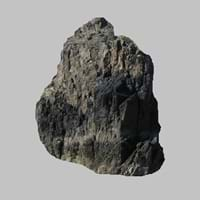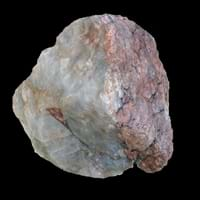Definition
Metapelite is an old and currently not widely used field geological term for a clay rich fine-grained clastic sediment or sedimentary rock, i.e. mud or a mudstone
Pegmatite rock is a holocrystalline, intrusive igneous rock which is composed of interlocking phaneritic crystals
Discoverer
Unknown
R. J. Hauy
Etymology
From Pelos or clay in Greek
From Greek pegma, pegmat which means- thing joined together + -ite
Class
Metamorphic Rocks
Igneous Rocks
Sub-Class
Durable Rock, Medium Hardness Rock
Durable Rock, Hard Rock
Group
Not Applicable
Plutonic
Other Categories
Coarse Grained Rock, Fine Grained Rock, Medium Grained Rock, Opaque Rock
Coarse Grained Rock, Opaque Rock
Texture
Foliated
Pegmatitic
Color
Dark Greenish - Grey, Green, Light Green, Light Greenish Grey
Black, Brown, Cream, Green, Grey, Pink, Red, Rust, Silver, White, Yellow
Durability
Durable
Durable
Scratch Resistant
Yes
Yes
Appearance
Banded
Layered, Banded, Veined and Shiny
Interior Uses
Decorative Aggregates, Interior Decoration
Decorative Aggregates, Flooring, Interior Decoration
Exterior Uses
As Building Stone, As Facing Stone
As Building Stone, As Facing Stone, Paving Stone
Other Architectural Uses
Curbing
Curbing
Construction Industry
Cement Manufacture, Construction Aggregate, for Road Aggregate
As Dimension Stone, Building houses or walls, Construction Aggregate, for Road Aggregate, Landscaping
Medical Industry
Not Yet Used
Not Yet Used
Antiquity Uses
Artifacts
Artifacts, Sculpture, Small Figurines
Commercial Uses
Commemorative Tablets, Creating Artwork
Creating Artwork, Jewelry, Source of corundum, tourmalines, beryls and topaz
Types
Not Available
Granite Pegmatite, Gabbro Pegmatite and Diorite Pegmatite
Features
Easily splits into thin plates, It is One of the Oldest, Strongest and Hardest Rock
Generally rough to touch, Is one of the oldest rock, Source of corundum, tourmalines, beryls and topaz
Archaeological Significance
Monuments
Not Yet Used
Not Yet Used
Famous Monuments
Not Applicable
Not Applicable
Sculpture
Not Yet Used
Used
Famous Sculptures
Not Applicable
Data Not Available
Pictographs
Used
Not Used
Petroglyphs
Used
Not Used
Figurines
Not Yet Used
Used
Formation
Due to change in environmental conditions, rocks are heated and pressurized deep inside the Earth's surface. Metapelite is formed from the extreme heat caused by magma or by the intense collisions and friction of tectonic plates.
Pegmatite rock is holocrystalline, intrusive igneous rock which is formed by partial melting and dewatering during the process of metamorphism.
Mineral Content
Albite, Chlorite, Quartz
Apatite, Beryl, Feldspar, Fluorite, Garnet, Lepidolite, Quartz, Silica, Spodumene, Topaz
Compound Content
Aluminium Oxide, CaO, MgO
Aluminium Oxide, CaO, Iron(III) Oxide, FeO, Potassium Oxide, Magnesium Carbonate, MgO, Phosphorus Pentoxide
Types of Metamorphism
Not Applicable
Burial Metamorphism, Cataclastic Metamorphism, Contact Metamorphism, Hydrothermal Metamorphism, Impact Metamorphism, Regional Metamorphism
Types of Weathering
Biological Weathering, Chemical Weathering, Mechanical Weathering
Biological Weathering, Chemical Weathering, Mechanical Weathering
Types of Erosion
Chemical Erosion, Coastal Erosion, Water Erosion, Wind Erosion
Chemical Erosion, Coastal Erosion, Glacier Erosion, Sea Erosion, Water Erosion, Wind Erosion
Grain Size
Medium to Fine Coarse Grained
Medium to Coarse Grained
Fracture
Fibrous
Conchoidal
Porosity
Highly Porous
Less Porous
Luster
Earthy
Grainy, Pearly and Vitreous
Compressive Strength
Not Available
Cleavage
Not Available
Perfect
Toughness
Not Available
2.1
Specific Gravity
3.4-3.7
2.6-2.63
Transparency
Opaque
Translucent to Opaque
Density
0-300 g/cm3
2.6-2.65 g/cm3
Specific Heat Capacity
Not Available
Resistance
Heat Resistant, Impact Resistant, Pressure Resistant
Heat Resistant, Impact Resistant, Pressure Resistant
Deposits in Eastern Continents
Asia
Not Yet Found
China, India, Iran, Japan, Nepal, North Korea, Russia, Saudi Arabia, South Korea
Africa
Western Africa
South Africa
Europe
United Kingdom
Austria, France, Greece, Ireland, Italy, Netherlands, Slovakia, Spain, Turkey, Ukraine
Others
Not Yet Found
Not Yet Found
Deposits in Western Continents
North America
Not Available
Canada
South America
Brazil, Colombia, Ecuador
Brazil
Deposits in Oceania Continent
Australia
Central Australia, Western Australia
New South Wales, Queensland, South Australia, Western Australia
Metapelite vs Pegmatite Characteristics
Though some rocks look identical, they have certain characteristics which distinguish them from others. Characteristics of rocks include texture, appearance, color, fracture, streak, hardness etc. Metapelite vs Pegmatite characteristics assist us to distinguish and recognize rocks. Also you can check about Properties of Metapelite and Properties of Pegmatite. Learn more about Metapelite vs Pegmatite in the next section. The interior uses of Metapelite include Decorative aggregates and Interior decoration whereas the interior uses of Pegmatite include Decorative aggregates, Flooring and Interior decoration. Due to some exceptional properties of Metapelite and Pegmatite, they have various applications in construction industry. The uses of Metapelite in construction industry include Cement manufacture, Construction aggregate, For road aggregate and that of Pegmatite include As dimension stone, Building houses or walls, Construction aggregate, For road aggregate, Landscaping.
More about Metapelite and Pegmatite
Here you can know more about Metapelite and Pegmatite. The life cycle of a rock consists of formation of rock, composition of rock and transformation of rock. The composition of Metapelite and Pegmatite consists of mineral content and compound content. The mineral content of Metapelite includes Albite, Chlorite, Quartz and mineral content of Pegmatite includes Apatite, Beryl, Feldspar, Fluorite, Garnet, Lepidolite, Quartz, Silica, Spodumene, Topaz. You can also check out the list of all . When we have to compare Metapelite vs Pegmatite, the texture, color and appearance plays an important role in determining the type of rock. Metapelite is available in dark greenish - grey, green, light green, light greenish grey colors whereas, Pegmatite is available in black, brown, cream, green, grey, pink, red, rust, silver, white, yellow colors. Appearance of Metapelite is Banded and that of Pegmatite is Layered, Banded, Veined and Shiny. Properties of rock is another aspect for Metapelite vs Pegmatite. The hardness of Metapelite is 5-6 and that of Pegmatite is 7. The types of Metapelite are Not Available whereas types of Pegmatite are Granite Pegmatite, Gabbro Pegmatite and Diorite Pegmatite. Streak of rock is the color of powder produced when it is dragged across an unweathered surface. The streak of Metapelite is unknown while that of Pegmatite is white. The specific heat capacity of Metapelite is 0.72 kJ/Kg K and that of Pegmatite is Not Available. Depending on the properties like hardness, toughness, specific heat capacity, porosity etc., rocks are resistant to heat, wear, impact, etc.Metapelite is heat resistant, impact resistant, pressure resistant whereas Pegmatite is heat resistant, impact resistant, pressure resistant.





